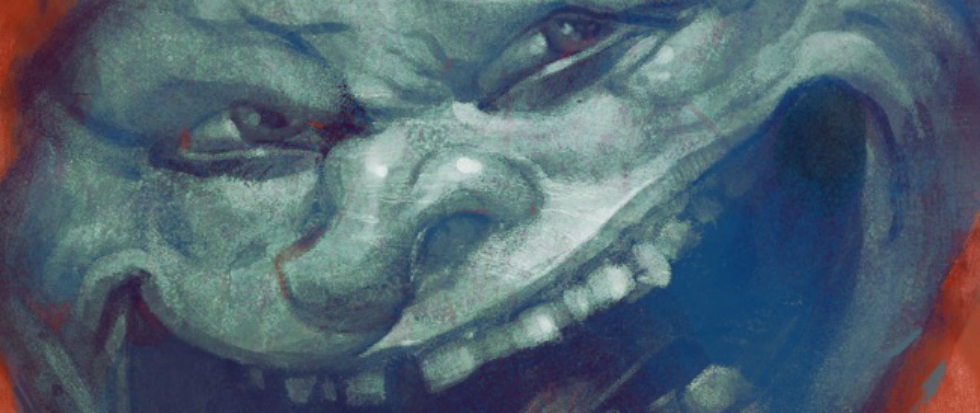
Rhythm of Stillness

This column is a reprint from Unwinnable Monthly #183. If you like what you see, grab the magazine for less than ten dollars, or subscribe and get all future magazines for half price.
———
Analyzing the digital and analog feedback loop.
———
There’s always a passionate, sometimes overzealous set of players who demand that certain mechanics be present in practically every game. But these must especially be present in specific game genres, such as cozy and RPGs. These mechanics, fishing and petting animals, are often meme’d about, particularly when they don’t occur as a minigame for the latter genre mentioned.
I would find this state of affairs charming if players didn’t always demand these types of mechanics to not only be present in their games but for them to also occur in the same format each time. Not only is it replicating gameplay in a stagnant manner (the same button presses, the same reaction physics and achievements, etc.) it limits these mechanics to only exist in a transactional sense in the game world. Similar to cooking in games, a topic I’m rather fond of, there’s a lot more potential for mechanics like fishing to be represented and incorporated into gameplay in alternative ways.
Several years back there was a brief but humorous revival of the discourse of the narratology versus ludology debate on Twitter. I barely remember how this occurred other than the point being made that it was such an old topic for Games Studies scholars and critics and yet treated in some academic circles as a brand-new subject for discussion. There were a lot of memes about needing to include “in this paper, I will first summarize the narratology versus ludology debate…” in a thesis. I’m now invoking this debate of yore not to outline it once more, but to emphasize how these elements of this tired discourse are still straggling behind any irritation caused by lack of interaction in games. This is especially the case for moments like fishing in games that some players are very passionate about.

I’ve always liked moments of stillness in games where mechanical design is well-employed. This is perhaps sentimental of me, but there’s a poetic quality to having deliberate pauses within the game world, whether they are caused by an environment lacking obstacles in the form of enemies or physical terrain. Ueda Fumito’s works, conversely, sometimes use obstacles to underscore how stillness and silence are essential to his narrative themes of deep loneliness, vulnerability and the tenuous nature of empathy. Amr Al-Aaser noted in their constructive criticism of remakes like Shadow of the Colossus that since some titles are very “aesthetically complete” in their design. I agree with Al-Aaser’s thesis “that games are part of the modern myth” and that remakes are the retellings we pass down both in a social and technological sense. Therefore, “revising” a game like Shadow of the Colossus by adding a competitive mechanic like timing your sprints on horseback, changes not just the feel of the gameplay but the overall narrative.
Part of the reason I like to harp on about moments of absence in games that live in my kinetic memory is because withholding control from the player or setting a specific pace are vital to the unique artistry of the medium. Baldur’s Gate III, as much as its expansive agency can be a source of excitement or decision-fatigue, is at its best when it sets nigh-impossible ability check scores for the player. There’s a palpable tension from knowing that you’re screwed by the mechanics of the game, even if in some cases the high ability checks are a ludic sleight-of-hand. South of the Circle is adept at this as well, with the entire game focusing on illusory control, or the struggle to hold on to what little control we think we have over a narrative. The protagonist of that game, Peter, is haunted by the specter of his abusive father who set the tone for patriarchal figures in his life, all of whom force him to approach the agency afforded him with a sense of entitlement. Inevitably (or at least in my playthrough) Peter loses his connection to someone dear because he believes there’s always a way for him to hold on to what he wants. Some of the feedback this game received was critical about how light the interactive elements of this game were, but I think that sometimes certain narrative themes are better served by minimalistic design. Games are an interactive medium first and foremost, yes, but why does interaction always mean the maximum amount of that quality? Most dance forms require a fair number of interruptions or intermissions to be perceived in a nuanced way. Perpetual motion is also potentially disorienting or uninteresting.
There’s a third element to stillness and pauses in games that I’d like to add though and it’s something that’s brought me a lot of peace in the aftermath of a busy and often tumultuous year. Doing nothing. Holding space for contemplation or taking in the pleasant concept art of a game is a valid reason for excluding interaction in certain moments during play. I don’t think doing nothing is always the right aesthetic choice; sometimes we want to demonstrate how silence and inaction can be harmful to others we could be helping . . . but I also think there are moments where players should be reminded of the importance of just being and appreciating the medium. Snufkin: Melody of Moominvalley has an almost somnambulistic calm about it, a quality perfect for proving this point.

Like the Moomins who hibernate during the winter or Snufkin’s wanderings during that season, the game in its opening moments homes in on how the world feels to the titular philosopher as he returns to Moominvalley as it wakes up for spring. Sigur Ros collaborated with the ironically named developer Hyper Games to produce a soundtrack that is at once whimsical and wistful. The mechanics of Snufkin’s game are harmonious with the character’s nature-loving and anarchistic beliefs. You can coax creatures into cooperating with you as you travel back to Moominvalley to keep your promise to visit your friend Moomintroll by playing tunes on your harmonica. You rip up signs imposing arbitrary rules by the security officers and politicians to return nature to a less rigid form. But there’s one key mechanic missing, on purpose, from Snufkin’s possible interactions – and surprisingly it’s fishing.
Players might initially find it frustrating that you cannot actively fish in a minigame sequence, but how fishing is framed in Snufkin is actually quite appropriate. Snufkin is known for taking life at his own pace and his hobby of fishing is more for the sake of being Zen than anything else. There’s even a quote of his in the English-dubbed ’90s cartoon adaptation of the Moomins series that perfectly illustrates this sentiment.
During an uneventful moment of Snufkin and several companions waiting for fish to bite at a pond, Sniff remarks that fishing is boring and Little My asks if the philosopher is sure that they are at the right place for the activity. He replies to her that “Once you learn the rhythm of the rod, simply fishing with it may become more gratifying than catching with it.” Another quote of his to Moomintroll is that “The rhythm of the rod carries your body, mind and spirit to the water . . . whether you catch a fish or not, the water will always give you a little of its strength, some of its energy and much of its peace.” By toning down the music to emphasize the gentle sound of the waves off the pier and showing you a simple animation of Snufkin sitting and fishing, this non-interactive moment is essential for understanding his character and why he loves nature so much. Of course, he is also fickle and prone to impatience at times like the rest of his friends, but he never misses a chance to engage in his favorite activity regardless.
Stillness in games is underrated because games often mimic the more toxic parts of productivity. There’s a beauty and a purpose to making players aware of their rush to gain achievements and commodities to trade with. And there’s inherent, non-monetary value in holding space for just being, both within a game world and outside of it.
———
Phoenix Simms is an Atlantic Canadian cryptid who is a freelance writer and the co-editor of The Imaginary Engine Review a.k.a. TIER. You can lure her out of hibernation during the winter with rare SFF novels, ergonomic stationery, or if all else fails, gourmet cupcakes. Or you can just geek out with her where skies are blue.




